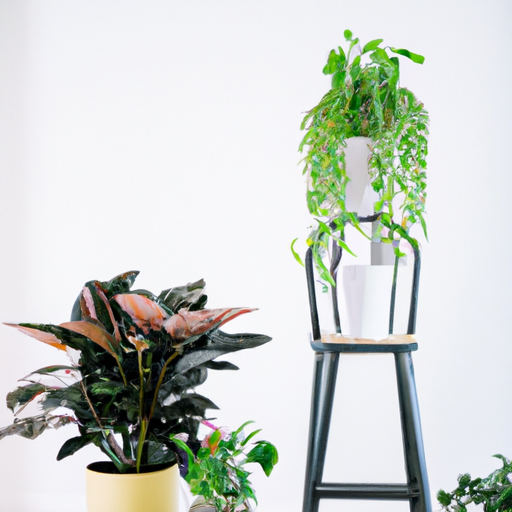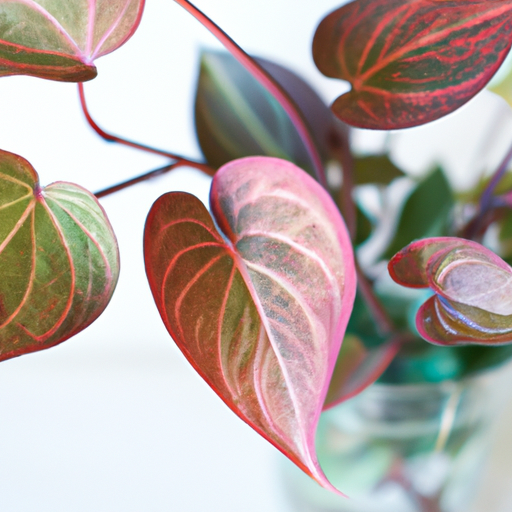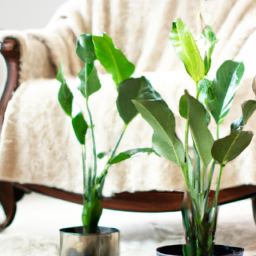
Choosing the Right Indoor Plants for Different Living Spaces
Introduction
Indoor plants can bring life and beauty to any living space, but not all plants thrive in every environment. When it comes to styling indoor plants in different living spaces, it’s essential to choose the right plants that will not only complement your decor but also thrive in the specific conditions of each room. In this guide, we will walk you through the step-by-step process of selecting the perfect indoor plants for various living spaces, ensuring that your plants not only look fantastic but also stay healthy and vibrant.
Assessing Light Conditions
The first step in choosing the right indoor plants for different living spaces is to assess the available light conditions in each room. Different plants have varying light requirements, and placing a plant in an unsuitable light environment can lead to poor growth or even death. Here are some common light conditions and the types of plants that thrive in them:
1. Bright and Direct Sunlight
If a room receives ample sunlight throughout the day, you have a wide range of options for indoor plants. Succulents like Aloe Vera and Jade Plants, as well as cacti, thrive in direct sunlight. You can also consider flowering plants like Geraniums or Peace Lilies, which add a splash of color to your living space.
2. Bright Indirect Light
Rooms with bright indirect light are perfect for a variety of foliage plants. Some popular choices include Snake Plants, Pothos, and Spider Plants. These plants can tolerate lower light levels but still require bright, indirect light to thrive. They are excellent choices for living rooms or bedrooms with large windows.
3. Low Light
If you have a room with minimal natural light, don’t worry! There are still plenty of indoor plants that can thrive in low light conditions. Some popular low-light plants include ZZ Plants, Cast Iron Plants, and Peace Lilies. These plants have adapted to survive in the understory of forests, making them perfect for rooms with limited sunlight.
Considering Humidity and Temperature
Apart from light conditions, humidity and temperature also play crucial roles in the health and growth of indoor plants. Different plants have different humidity and temperature preferences, and it’s important to choose plants that can thrive in the specific conditions of each living space.
1. High Humidity
If you have a bathroom or a kitchen with high humidity levels, consider plants that thrive in such environments. Ferns, such as Boston Ferns and Maidenhair Ferns, love high humidity and can add a touch of elegance to your bathroom. Orchids are another excellent choice for high humidity areas, as they thrive in tropical conditions.
2. Low Humidity
For rooms with low humidity, it’s important to choose plants that can tolerate drier conditions. Succulents like Haworthias and Echeverias are perfect for low humidity environments, as they have adapted to store water in their leaves. Spider Plants and Snake Plants also tolerate lower humidity levels and can thrive in living spaces with dry air.
3. Temperature Considerations
Different plants have different temperature preferences, and it’s important to consider the average temperature of each living space when selecting indoor plants. Most common houseplants prefer temperatures between 60-75°F (15-24°C). However, some plants, like tropical varieties, prefer warmer temperatures, while others, like certain succulents, can tolerate cooler conditions. Be sure to choose plants that can thrive in the temperature range of each room.
Matching Plant Sizes with Living Spaces
When styling indoor plants in different living spaces, it’s crucial to consider the size of the plants and how they fit into the overall aesthetic of the room. Here are some tips for matching plant sizes with different living spaces:
1. Small Living Spaces
In small living spaces like studio apartments or tiny bedrooms, it’s best to choose small to medium-sized plants that don’t overwhelm the room. Plants like Pothos, Spider Plants, or small Succulents are great choices as they can be placed on shelves, countertops, or hanging planters to maximize space.
2. Large Living Spaces
For larger living spaces like spacious living rooms or open-concept areas, larger plants can make a bold statement. Consider plants like Fiddle Leaf Figs, Monstera Deliciosas, or Areca Palms, which can add height and drama to the room. These plants can be placed in corners, near windows, or as standalone pieces to create a focal point.
3. Balancing Plant Sizes
In rooms with multiple plants, it’s important to create a balanced arrangement by mixing different plant sizes. Pairing tall plants with smaller ones can create visual interest and add depth to the space. Experiment with different combinations to find the perfect balance that suits your living space.
Conclusion
Styling indoor plants in different living spaces is an art that requires careful consideration of light conditions, humidity, temperature, and plant sizes. By following these steps and selecting the right plants for each room, you can create a harmonious and vibrant indoor garden that enhances the beauty of your living spaces. Remember to regularly care for your plants by providing adequate water, light, and nutrients to ensure their health and longevity. Happy styling!

Creative Ways to Style Indoor Plants in Small Apartments
Indoor plants not only bring a touch of nature into our living spaces but also provide numerous benefits, such as purifying the air and improving our overall well-being. However, styling indoor plants in small apartments can be a challenge due to limited space. With a little creativity and strategic placement, you can transform your small apartment into a green oasis. In this article, we will explore some creative ways to style indoor plants in small apartments.
1. Vertical Gardens
When space is limited, going vertical is a smart solution. Vertical gardens allow you to maximize your space by utilizing walls and hanging planters. There are various ways to create a vertical garden in your small apartment. One option is to install wall-mounted shelves or racks specifically designed for holding potted plants. These shelves can be arranged in a visually appealing pattern, creating a stunning display of greenery on your wall.
Another option is to hang planters from the ceiling or attach them to a curtain rod. This not only adds a unique touch to your living space but also frees up valuable floor space. You can choose from a wide variety of hanging planters, ranging from traditional macramé plant hangers to modern geometric designs.
Additionally, consider using a trellis or a plant stand to support climbing plants. This not only adds vertical interest but also creates a sense of depth in your small apartment. Place the trellis or plant stand near a window to ensure your climbing plants receive adequate sunlight.
2. Miniature Gardens
If you have limited floor space, creating miniature gardens is a fantastic way to style indoor plants in your small apartment. Miniature gardens, also known as terrariums, are self-contained ecosystems that require minimal maintenance. They can be made in glass containers of various shapes and sizes, such as fish tanks, mason jars, or even old light bulbs.
To create a miniature garden, start by adding a layer of rocks or pebbles at the bottom of your chosen container. This helps with drainage. On top of the rocks, add a layer of activated charcoal to keep the terrarium fresh and prevent odors. Next, add a layer of potting soil specifically formulated for indoor plants.
Now comes the fun part – selecting and arranging your plants. Choose small plants that thrive in humid environments, such as ferns, mosses, and succulents. Arrange them in a visually pleasing manner, considering their different heights, colors, and textures. Finally, add decorative elements like small figurines or pebbles to enhance the overall aesthetic appeal of your miniature garden.
3. Wall-Mounted Planters
Wall-mounted planters are an excellent option for styling indoor plants in small apartments. They not only save valuable floor space but also add a touch of greenery to your walls. There are various types of wall-mounted planters available, ranging from simple wall pockets to modular systems that allow you to create your own unique plant display.
When choosing wall-mounted planters, consider the overall aesthetic of your living space. Opt for planters that complement your existing décor and color scheme. You can choose to have a single large planter as a statement piece or create a gallery wall of smaller planters for a more eclectic look.
Before mounting the planters, ensure that your walls can support the weight of the plants and the planter itself. It is also important to select plants that thrive in the given lighting conditions. Some plants, such as pothos and snake plants, can tolerate low-light environments, making them ideal choices for wall-mounted planters in small apartments.
In conclusion, styling indoor plants in small apartments requires some creativity and strategic thinking. By utilizing vertical space, creating miniature gardens, and incorporating wall-mounted planters, you can transform your small apartment into a green oasis. Remember to choose plants that thrive in the given lighting conditions and complement your existing décor. With these creative ways to style indoor plants, you can enjoy the benefits of nature even in the smallest of living spaces.
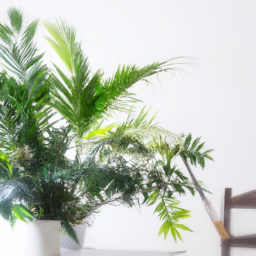
How to Incorporate Indoor Plants in Modern Living Rooms
Introduction
Indoor plants have become an essential element in modern interior design, bringing a touch of nature and freshness to our living spaces. Incorporating indoor plants in modern living rooms not only adds aesthetic appeal but also offers numerous health benefits. However, styling indoor plants in a way that complements the modern aesthetics of a living room can be a bit challenging. In this guide, we will explore various techniques and ideas to help you seamlessly integrate indoor plants into your modern living room.
Choosing the Right Plants
When it comes to selecting indoor plants for your modern living room, it’s important to consider their size, shape, and maintenance requirements. Opt for plants that have a sleek and contemporary look, such as the snake plant, fiddle leaf fig, or peace lily. These plants not only thrive indoors but also complement the clean lines and minimalistic design often found in modern living rooms. Additionally, choose plants with varying heights and textures to create visual interest and depth in your space.
Placement and Arrangement
Once you’ve chosen the right plants, it’s crucial to determine their placement and arrangement within your modern living room. Start by identifying the areas that could benefit from a touch of greenery, such as empty corners, side tables, or shelves. Consider using plant stands or hanging planters to elevate your plants and create a more dynamic display. Grouping plants of different sizes and shapes together can also create a visually appealing focal point in your living room.
When arranging your indoor plants, keep in mind the overall balance and symmetry of your space. Place taller plants towards the back or in corners, while shorter plants can be placed towards the front or on side tables. This arrangement helps create a sense of depth and ensures that no plant overwhelms the space. Experiment with different arrangements until you find the perfect balance that complements your modern living room’s design.
Choosing Stylish Planters
In modern living rooms, the choice of planters can greatly impact the overall aesthetics. Opt for planters that align with the contemporary style of your space. Sleek and minimalist planters made of materials like ceramic, metal, or concrete can effortlessly blend in with modern decor. Consider choosing planters in neutral colors or monochromatic tones to maintain a cohesive and sophisticated look. Remember to choose planters with proper drainage to ensure the health and longevity of your indoor plants.
To add a touch of uniqueness and personality to your modern living room, don’t be afraid to experiment with unconventional planters. Vintage pots, geometric-shaped containers, or even repurposed objects can serve as interesting and eye-catching planters. Just ensure that these unconventional choices still complement the overall design and ambiance of your living room.
Caring for Your Indoor Plants
Proper care is essential to keep your indoor plants thriving in your modern living room. Pay attention to their specific light and water requirements and ensure they are placed in suitable locations within your space. Most modern living rooms have ample natural light, but if your space lacks sufficient sunlight, consider using artificial grow lights to provide the necessary light for your plants.
Regularly dust and clean the leaves of your indoor plants to keep them looking vibrant and healthy. Monitor the moisture levels of the soil and water your plants accordingly, avoiding overwatering or underwatering. Additionally, fertilize your plants as needed to provide them with essential nutrients for growth. By providing the right care, your indoor plants will continue to enhance the beauty and ambiance of your modern living room.
Conclusion
Incorporating indoor plants into modern living rooms can elevate the overall aesthetic appeal and create a harmonious blend of nature and contemporary design. By carefully choosing the right plants, considering their placement and arrangement, selecting stylish planters, and providing proper care, you can seamlessly integrate indoor plants into your modern living room. Embrace the beauty and benefits of indoor plants, and let them breathe life into your living space.
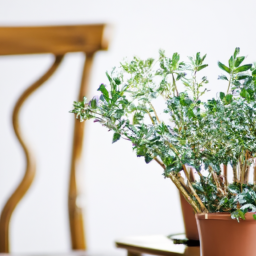
Styling Indoor Plants for a Relaxing Bedroom Oasis
Creating a relaxing bedroom oasis is essential for a good night’s sleep and overall well-being. One way to enhance the tranquility of your bedroom is by incorporating indoor plants into your decor. Not only do plants add a touch of nature to your space, but they also provide numerous benefits such as improved air quality and reduced stress levels. In this guide, we will explore how to style indoor plants in different living spaces to create a serene and calming atmosphere in your bedroom.
Choosing the Right Plants
The first step in styling indoor plants for your bedroom oasis is selecting the right plants. It’s important to choose plants that thrive in low-light conditions and have a calming effect. Some popular options for bedroom plants include:
1. Snake Plant (Sansevieria trifasciata)
The snake plant is a low-maintenance plant that thrives in low-light environments. Its long, upright leaves add a touch of elegance to any bedroom decor. The snake plant is also known for its air-purifying properties, making it an excellent choice for improving indoor air quality.
2. Peace Lily (Spathiphyllum)
The peace lily is a beautiful plant with glossy, dark green leaves and delicate white flowers. It thrives in low-light conditions and helps to remove toxins from the air, promoting a healthier sleep environment. Be cautious if you have pets, as peace lilies can be toxic to cats and dogs if ingested.
3. Pothos (Epipremnum aureum)
Pothos is a popular choice for indoor plants due to its low-maintenance nature and ability to thrive in various lighting conditions. Its cascading vines add a touch of greenery to your bedroom, creating a calming and relaxing atmosphere.
Placement and Arrangement
Once you’ve chosen the perfect plants for your bedroom oasis, it’s time to consider their placement and arrangement. Here are some tips to help you create a harmonious display:
1. Consider the Lighting
Before placing your plants, assess the lighting conditions in your bedroom. Different plants have different light requirements, so it’s essential to match them with the available light. For example, if your bedroom has a window that receives direct sunlight, consider placing sun-loving plants like succulents or cacti near the window. On the other hand, if your bedroom has limited natural light, opt for low-light plants like snake plants or pothos.
2. Create Height Variation
Adding height variation to your plant display can make it more visually appealing. Place taller plants, such as snake plants or peace lilies, in the corners of your bedroom or next to a dresser or nightstand. This not only fills empty spaces but also adds a sense of depth to your bedroom oasis.
3. Group Plants Together
Grouping plants together can create a lush and cohesive look. Consider placing plants with similar care requirements in clusters to make watering and maintenance easier. You can also mix and match different plant varieties to add texture and visual interest to your bedroom oasis.
Maintaining Your Bedroom Oasis
Now that you’ve styled your indoor plants in your bedroom oasis, it’s important to maintain their health and appearance. Here are some essential tips for plant care:
1. Watering
Proper watering is crucial for the health of your indoor plants. Most plants prefer to be evenly moist but not waterlogged. Check the moisture level of the soil regularly and adjust your watering schedule accordingly. Avoid overwatering, as it can lead to root rot and other issues. Remember, it’s better to underwater than overwater.
2. Light and Temperature
Ensure that your plants are receiving adequate light and are kept at the appropriate temperature for their specific needs. Avoid placing plants in direct sunlight if they prefer indirect light, as it can scorch their leaves. Similarly, keep plants away from drafts or extreme temperature fluctuations.
3. Pruning and Cleaning
Regularly prune your plants to remove dead or yellowing leaves and promote healthy growth. Dusting the leaves with a soft cloth or gently rinsing them under lukewarm water can help keep them clean and free from dust, which can hinder their ability to photosynthesize.
By following these steps and incorporating indoor plants into your bedroom decor, you can create a relaxing oasis that promotes better sleep and overall well-being. Remember to choose plants that thrive in low-light conditions, consider their placement and arrangement, and provide proper care to maintain their health. Enjoy the soothing presence of nature in your bedroom and reap the benefits of a peaceful and rejuvenating sleep environment.
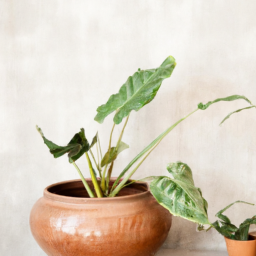
Tips for Arranging Indoor Plants in Open Concept Living Spaces
Indoor plants not only add a touch of nature to our living spaces but also provide numerous health benefits. When it comes to arranging indoor plants in open concept living spaces, there are a few key factors to consider. In this guide, we will explore five essential tips that will help you style your indoor plants in a way that complements your open concept living space.
1. Consider the Size and Scale
Before diving into arranging your indoor plants, it’s crucial to consider the size and scale of your open concept living space. Large, towering plants may overpower a smaller room, while tiny plants may get lost in a larger area. Take into account the ceiling height, available floor space, and furniture arrangement.
For high ceilings, tall plants like the Fiddle Leaf Fig or Kentia Palm can create a dramatic effect and draw the eye upward. In smaller spaces, opt for compact plants like the Snake Plant or Peace Lily that can be placed on shelves or side tables without overwhelming the room.
Additionally, consider the scale of your furniture. If you have large, bulky furniture, balance it out with larger plants. Conversely, if your furniture is more delicate, choose smaller plants to maintain a harmonious visual balance.
2. Create Visual Cohesion
When arranging indoor plants in an open concept living space, it’s essential to create visual cohesion throughout the entire area. This can be achieved by selecting plants that share similar characteristics in terms of shape, color, or texture.
For instance, if you have a modern and minimalist living space, opt for plants with clean lines and simple foliage, such as the ZZ Plant or the Pothos. On the other hand, if your living space has a bohemian vibe, go for plants with lush, trailing vines like the String of Pearls or the Spider Plant.
Additionally, consider the color palette of your living space. If your decor features neutral tones, choose plants with vibrant green foliage to create a striking contrast. Conversely, if your living space is already filled with colorful elements, opt for plants with more subdued foliage to avoid overwhelming the space.
3. Utilize Different Plant Heights
One effective way to style indoor plants in an open concept living space is by utilizing different plant heights. This technique adds visual interest and depth to the overall arrangement.
Start by placing taller plants in the corners or against walls to create a sense of verticality. This not only fills empty spaces but also draws the eye upward, making the room feel more spacious. Some great options for taller plants include the Swiss Cheese Plant or the Bird of Paradise.
Next, incorporate medium-sized plants on side tables, shelves, or plant stands. These plants add a mid-level layer to the arrangement and help create a sense of balance. Consider plants like the Rubber Plant or the Philodendron Brasil for this purpose.
Finally, use smaller plants to fill in gaps or to provide a low-level layer. These plants can be placed on coffee tables, window sills, or as hanging plants. The Haworthia or the Spiderwort are excellent choices for smaller plants.
4. Consider Lighting Conditions
When arranging indoor plants in open concept living spaces, it’s crucial to consider the lighting conditions of each area. Different plants have varying light requirements, and placing them in unsuitable locations can hinder their growth and overall appearance.
Identify the areas in your living space with direct sunlight, indirect sunlight, or low light. Then, choose plants that thrive in those conditions. For example, plants like the Aloe Vera or the Jade Plant thrive in bright, direct sunlight, while the Chinese Evergreen or the Cast Iron Plant can tolerate low light areas.
Additionally, be mindful of any artificial lighting you may have in your living space. Plants like the Snake Plant or the ZZ Plant can tolerate lower light conditions and are perfect for areas with limited natural light.
5. Consider Maintenance and Care
Lastly, when styling indoor plants in open concept living spaces, it’s important to consider the maintenance and care required for each plant. Different plants have varying watering, humidity, and temperature requirements, so it’s crucial to choose plants that align with your lifestyle and the conditions of your living space.
If you have a busy schedule or tend to forget about watering, opt for low-maintenance plants like the Snake Plant or the ZZ Plant. These plants can withstand periods of neglect and require minimal watering.
On the other hand, if you enjoy tending to your plants and have more time to dedicate to their care, you can opt for plants that require more attention, such as the Maidenhair Fern or the Orchid.
Additionally, consider the humidity levels in your living space. Plants like the Boston Fern or the Peace Lily thrive in higher humidity environments, while succulents like the Echeveria or the Haworthia prefer drier conditions.
By considering the maintenance and care requirements of each plant, you can ensure that your indoor plant arrangement remains healthy and vibrant for years to come.
In conclusion, arranging indoor plants in open concept living spaces is an art that requires careful consideration of size, scale, visual cohesion, plant heights, lighting conditions, and maintenance requirements. By following these five essential tips, you can create a stunning indoor plant arrangement that enhances the beauty and ambiance of your open concept living space.
Frequently Asked Questions (FAQ)
1. How can I style indoor plants in different living spaces?
There are several ways to style indoor plants in different living spaces. You can consider the size and lighting conditions of the space, as well as the overall aesthetic you want to achieve. Some popular options include using hanging plants, creating a plant shelf or wall, placing plants on side tables or countertops, or using plant stands or decorative pots.
2. What are some low-light indoor plants suitable for styling in living spaces?
Some low-light indoor plants that can be styled in living spaces include snake plants, pothos, ZZ plants, peace lilies, and Chinese evergreens. These plants can thrive in areas with minimal natural light and still add beauty to your living space.
3. How can I incorporate indoor plants into a small living room?
If you have a small living room, you can still incorporate indoor plants by using vertical space. Hang plants from the ceiling or place them on floating shelves. You can also opt for small potted plants that can be placed on side tables or windowsills. Additionally, using mirrors can create an illusion of space and reflect natural light, enhancing the presence of your indoor plants.
4. What are some indoor plants that can tolerate direct sunlight?
Some indoor plants that can tolerate direct sunlight include succulents like aloe vera, jade plants, and echeverias. Other options include cacti, rubber plants, and certain types of palms. However, it’s important to note that even these plants may need some protection from intense afternoon sun or may require acclimatization to direct sunlight.
5. How often should I water my indoor plants?
The watering frequency for indoor plants depends on various factors such as the type of plant, pot size, humidity levels, and environmental conditions. As a general rule, it’s best to allow the top inch or two of soil to dry out before watering again. Avoid overwatering, as it can lead to root rot. Regularly check the moisture level of the soil by sticking your finger into it.
6. Can I use artificial plants for styling indoor spaces?
Yes, you can use artificial plants for styling indoor spaces. Artificial plants require no maintenance and can be a great option if you have low-light areas or lack a green thumb. They come in various sizes and styles, allowing you to find options that suit your aesthetic preferences.
7. What are some tips for arranging indoor plants in a bedroom?
When arranging indoor plants in a bedroom, consider plants that release oxygen at night, such as snake plants or peace lilies. These plants can help improve air quality while you sleep. Additionally, choose plants that don’t require excessive watering or produce strong fragrances that may disrupt your sleep. Place them on nightstands, shelves, or hang them from the ceiling using macrame hangers.
8. Are there any indoor plants that can help purify the air in living spaces?
Yes, there are several indoor plants known for their air-purifying properties. Some examples include spider plants, pothos, snake plants, peace lilies, and bamboo palms. These plants can help remove toxins and improve air quality in your living spaces.
9. How can I prevent common indoor plant pests?
To prevent common indoor plant pests, regularly inspect your plants for any signs of infestation, such as yellowing leaves, webs, or tiny insects. Keep your plants clean by gently wiping their leaves with a damp cloth. Avoid overwatering, as it can create a favorable environment for pests. If you notice an infestation, isolate the affected plant and treat it with appropriate organic or chemical pest control methods.
10. What are some decorative accessories that can complement indoor plants?
There are various decorative accessories that can complement indoor plants, such as decorative pots or planters in different materials, shapes, and colors. You can also use macrame hangers, plant stands, or wall-mounted plant holders. Additionally, decorative pebbles, rocks, or moss can be added to the top layer of soil to enhance the overall aesthetic.
Emily Bloomfield is an interior designer and horticulturist specializing in incorporating indoor plants into interior spaces. With a background in both design and plant science, Emily offers a unique perspective on creating harmonious living environments through the synergy of greenery and aesthetics. Her creative ideas and innovative solutions make her a sought-after authority in the field.

